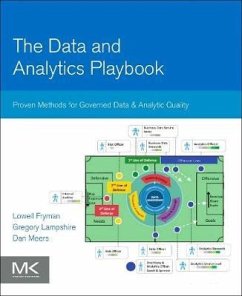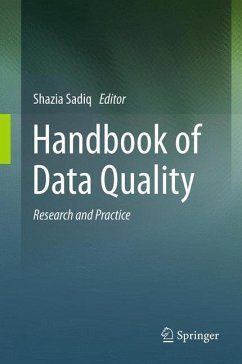
The Practitioner's Guide to Data Quality Improvement

PAYBACK Punkte
24 °P sammeln!
Information is an asset that is generated through numerous processes, with multiple feeds of raw data that are combined, processed, and fed out to multiple customers both inside and outside your organization. Many business problems can be directly tied to a situation in which data quality is below expectations. This can, however, be mitigated by closely controlling the quality of the process, overseeing the activities from beginning to end, and ensuring that any imperfections are identified as early as possible. The Practitioner's Guide to Data Quality Improvement provides readers with the fundamentals for developing an enterprise data quality program, and it serves as a guide for both the practitioner and the manager in establishing a data quality center of excellence. Readers are presented with information about business case templates, characterization of business impacts, correlated metrics, visualization and reporting, and the use of data quality tools. This seminal text offers advice on how to actually get the job done, not shying away from difficult topics or subjects.
The Practitioner's Guide to Data Quality Improvement offers a comprehensive look at data quality for business and IT, encompassing people, process, and technology. It shares the fundamentals for understanding the impacts of poor data quality, and guides practitioners and managers alike in socializing, gaining sponsorship for, planning, and establishing a data quality program.
It demonstrates how to institute and run a data quality program, from first thoughts and justifications to maintenance and ongoing metrics. It includes an in-depth look at the use of data quality tools, including business case templates, and tools for analysis, reporting, and strategic planning.
This book is recommended for data management practitioners, including database analysts, information analysts, data administrators, data architects, enterprise architects, data warehouse engineers, and systems analysts, and their managers.
It demonstrates how to institute and run a data quality program, from first thoughts and justifications to maintenance and ongoing metrics. It includes an in-depth look at the use of data quality tools, including business case templates, and tools for analysis, reporting, and strategic planning.
This book is recommended for data management practitioners, including database analysts, information analysts, data administrators, data architects, enterprise architects, data warehouse engineers, and systems analysts, and their managers.













